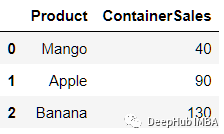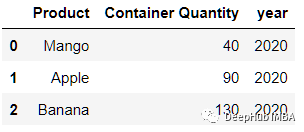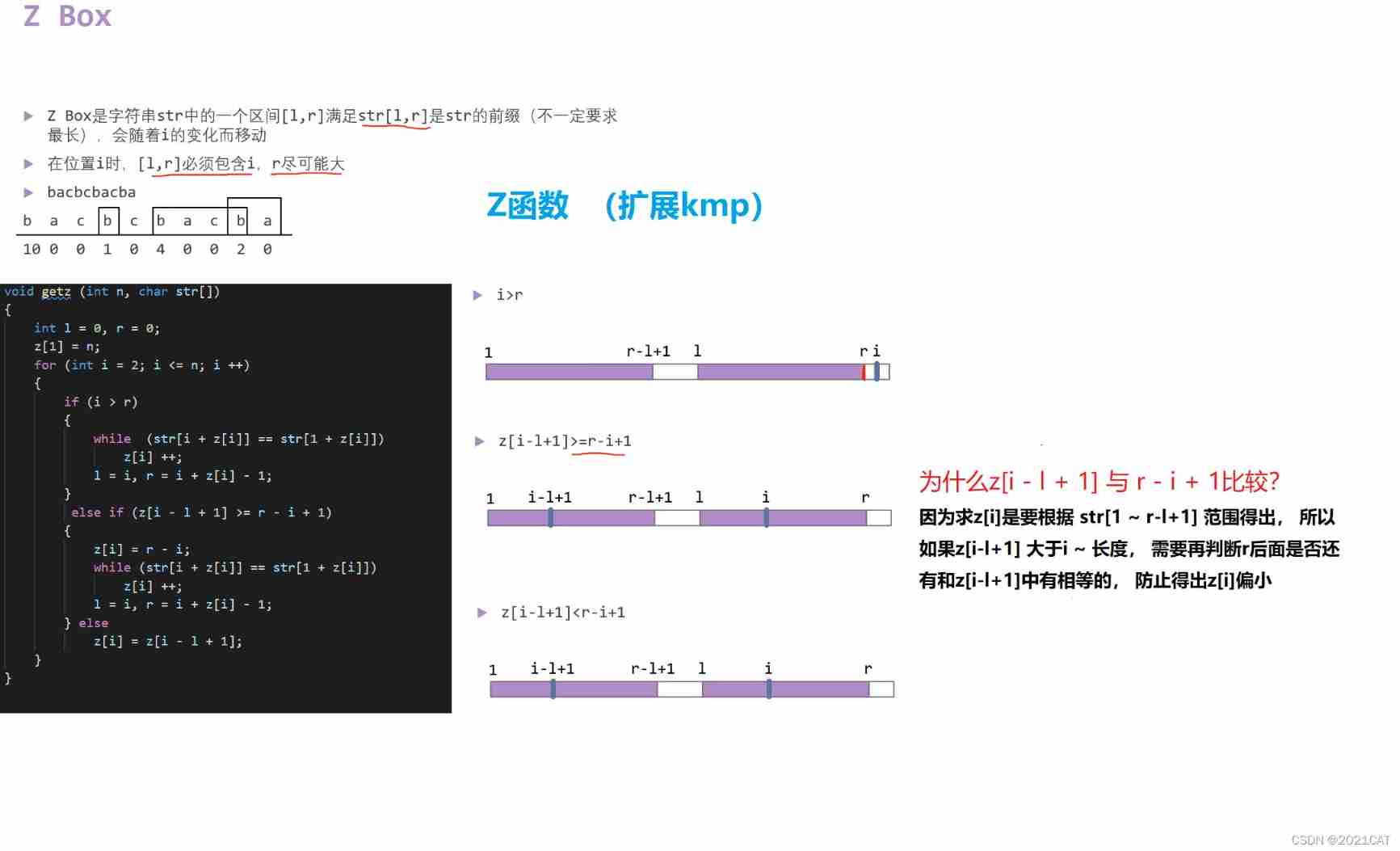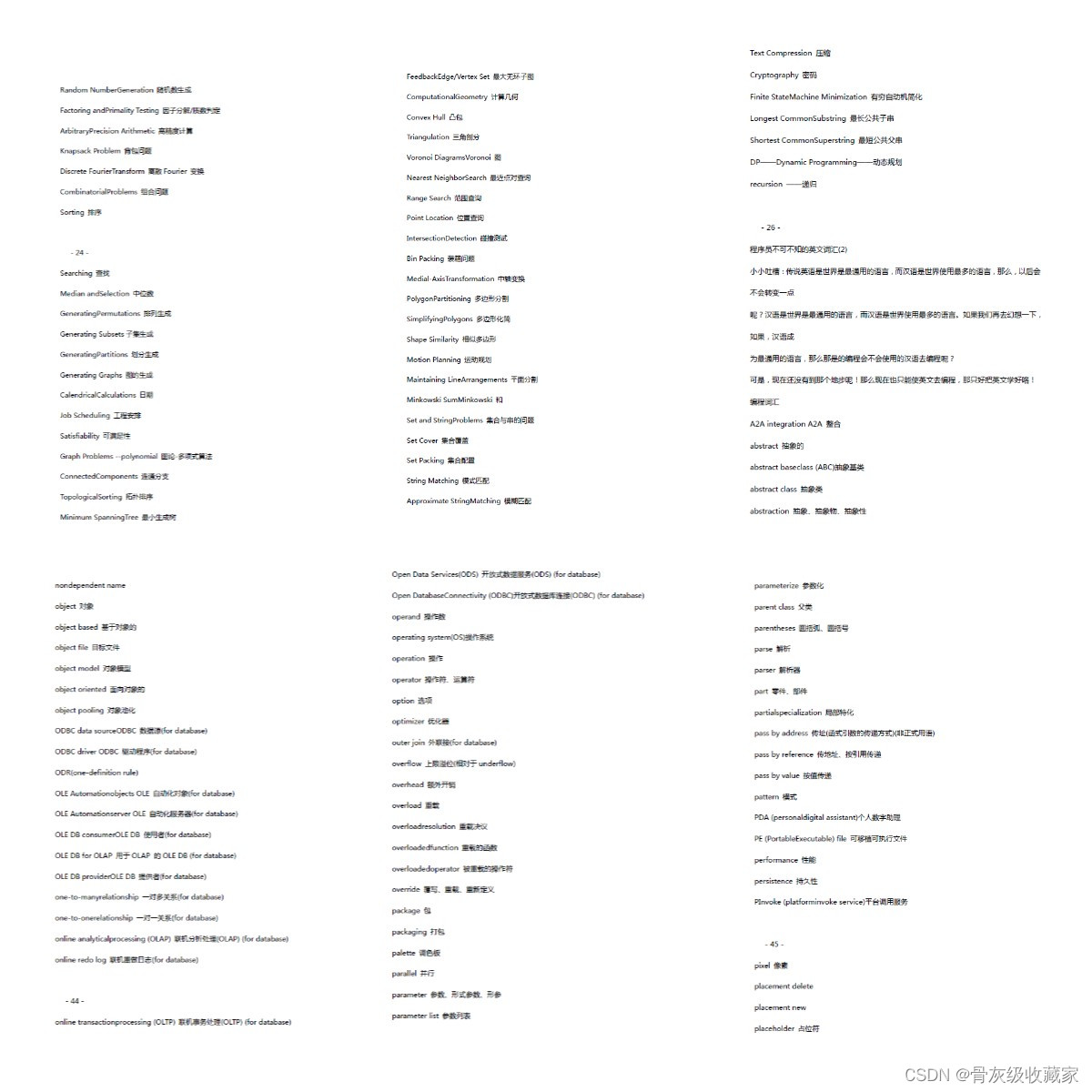当前位置:网站首页>50个常用的Numpy函数解释,参数和使用示例
50个常用的Numpy函数解释,参数和使用示例
2022-07-06 13:10:00 【deephub】
Numpy是python中最有用的工具之一。它可以有效地处理大容量数据。使用NumPy的最大原因之一是它有很多处理数组的函数。在本文中,将介绍NumPy在数据科学中最重要和最有用的一些函数。
创建数组
1、Array
它用于创建一维或多维数组
Dtype:生成数组所需的数据类型。
ndim:指定生成数组的最小维度数。
import numpy as np
np.array([1,2,3,4,5])
----------------
array([1, 2, 3, 4, 5, 6])
还可以使用此函数将pandas的df和series转为NumPy数组。
sex = pd.Series(['Male','Male','Female'])
np.array(sex)
------------------------
array(['Male', 'Male', 'Female'], dtype=object)
2、Linspace
创建一个具有指定间隔的浮点数的数组。
start:起始数字
end:结束
Num:要生成的样本数,默认为50。
np.linspace(10,100,10)
--------------------------------
array([ 10., 20., 30., 40., 50., 60., 70., 80., 90., 100.])
3、Arange
在给定的间隔内返回具有一定步长的整数。
step:数值步长。
np.arange(5,10,2)
-----------------------
array([5, 7, 9])
4、Uniform
在上下限之间的均匀分布中生成随机样本。
np.random.uniform(5,10,size = 4)
------------
array([6.47445571, 5.60725873, 8.82192327, 7.47674099])
np.random.uniform(size = 5)
------------
array([0.83358092, 0.41776134, 0.72349553])
np.random.uniform(size = (2,3))
------------
array([[0.7032511 , 0.63212039, 0.6779683 ],
[0.81150812, 0.26845613, 0.99535264]])
5、Random.randint
在一个范围内生成n个随机整数样本。
np.random.randint(5,10,10)
------------------------------
array([6, 8, 9, 9, 7, 6, 9, 8, 5, 9])
6、Random.random
生成n个随机浮点数样本。
np.random.random(3)
---------------------------
array([0.87656396, 0.24706716, 0.98950278])
7、Logspace
在对数尺度上生成间隔均匀的数字。
Start:序列的起始值。
End:序列的最后一个值。
endpoint:如果为True,最后一个样本将包含在序列中。
base:底数。默认是10。
np.logspace(0,10,5,base=2)
------------------
array([1.00000000e+00, 5.65685425e+00, 3.20000000e+01, 1.81019336e+02,1.02400000e+03])
8、zeroes
np.zeroes会创建一个全部为0的数组。
shape:阵列的形状。
Dtype:生成数组所需的数据类型。’ int ‘或默认’ float ’
np.zeros((2,3),dtype='int')
---------------
array([[0, 0, 0],
[0, 0, 0]])
np.zeros(5)
-----------------
array([0., 0., 0., 0., 0.])
9、ones
np.ones函数创建一个全部为1的数组。
np.ones((3,4))
------------------
array([[1., 1., 1., 1.],
[1., 1., 1., 1.],
[1., 1., 1., 1.]])
10、full
创建一个单独值的n维数组。
fill_value:填充值。
np.full((2,4),fill_value=2)
--------------
array([[2, 2, 2, 2],
[2, 2, 2, 2]])(2,4) : ꜱʜᴀᴘᴇ
11、Identity
创建具有指定维度的单位矩阵。
np.identity(4)
----------
array([[1., 0., 0., 0.],
[0., 1., 0., 0.],
[0., 0., 1., 0.],
[0., 0., 0., 1.]])#ᴅᴇꜰᴀᴜʟᴛ ᴅᴀᴛᴀ ᴛʏᴘᴇ ɪꜱ `ꜰʟᴏᴀᴛ`
数组操作
12、min
返回数组中的最小值。
axis:用于操作的轴。
out:用于存储输出的数组。
arr = np.array([1,1,2,3,3,4,5,6,6,2])
np.min(arr)
----------------
1
13、max
返回数组中的最大值。
np.max(arr)
------------------
6
14、unique
返回一个所有唯一元素排序的数组。
return_index:如果为True,返回数组的索引。
return_inverse:如果为True,返回唯一数组的下标。
return_counts:如果为True,返回数组中每个唯一元素出现的次数。
axis:要操作的轴。默认情况下,数组被认为是扁平的。
np.unique(arr,return_counts=True)
---------------------
(
array([1, 2, 3, 4, 5, 6]), ## Unique elements
array([2, 2, 2, 1, 1, 2], dtype=int64) ## Count
)
15、mean
返回数组的平均数
np.mean(arr,dtype='int')
-------------------------------
3
16、medain
返回数组的中位数。
arr = np.array([[1,2,3],[5,8,4]])
np.median(arr)
-----------------------------
3.5
17、digitize
返回输入数组中每个值所属的容器的索引。
bin:容器的数组。
right:表示该间隔是否包括右边或左边的bin。
a = np.array([-0.9, 0.5, 0.9, 1, 1.2, 1.4, 3.6, 4.7, 5.3])
bins = np.array([0,1,2,3])
np.digitize(a,bins)
-------------------------------
array([0, 1, 1, 2, 2, 2, 4, 4, 4], dtype=int64)
Exp Value
x < 0 : 0
0 <= x <1 : 1
1 <= x <2 : 2
2 <= x <3 : 3
3 <=x : 4
Compares -0.9 to 0, here x < 0 so Put 0 in resulting array.
Compares 0.5 to 0, here 0 <= x <1 so Put 1.
Compares 5.4 to 4, here 3<=x so Put 4
18、reshape
它是NumPy中最常用的函数之一。它返回一个数组,其中包含具有新形状的相同数据。
A = np.random.randint(15,size=(4,3))
A
----------------------
array([[ 8, 14, 1],
[ 8, 11, 4],
[ 9, 4, 1],
[13, 13, 11]])
A.reshape(3,4)
-----------------
array([[ 8, 14, 1, 8],
[11, 4, 9, 4],
[ 1, 13, 13, 11]])
A.reshape(-1)
-------------------
array([ 8, 14, 1, 8, 11, 4, 9, 4, 1, 13, 13, 11])
19、expand_dims
它用于扩展数组的维度。
arr = np.array([ 8, 14, 1, 8, 11, 4, 9, 4, 1, 13, 13, 11])
np.expand_dims(A,axis=0)
-------------------------
array([[ 8, 14, 1, 8, 11, 4, 9, 4, 1, 13, 13, 11]])
np.expand_dims(A,axis=1)
---------------------------
array([[ 8],
[14],
[ 1],
[ 8],
[11],
[ 4],
[ 9],
[ 4],
[ 1],
[13],
[13],
[11]])
20、squeeze
通过移除一个单一维度来降低数组的维度。
arr = np.array([[ 8],[14],[ 1],[ 8],[11],[ 4],[ 9],[ 4],[ 1],[13],[13],[11]])
np.squeeze(arr)
---------------------------
array([ 8, 14, 1, 8, 11, 4, 9, 4, 1, 13, 13, 11])
21、count_nonzero
计算所有非零元素并返回它们的计数。
a = np.array([0,0,1,1,1,0])
np.count_nonzero(a)
--------------------------
3
22、argwhere
查找并返回非零元素的所有下标。
a = np.array([0,0,1,1,1,0])
np.argwhere(a)
---------------------
array([[2],[3],[4]], dtype=int64)
23、argmax & argmin
argmax返回数组中Max元素的索引。它可以用于多类图像分类问题中获得高概率预测标签的指标。
arr = np.array([[0.12,0.64,0.19,0.05]])
np.argmax(arr)
---------
1
argmin将返回数组中min元素的索引。
np.argmin(min)
------
3
24、sort
对数组排序。
kind:要使用的排序算法。{‘quicksort’, ‘mergesort’, ‘heapsort’, ‘stable’}
arr = np.array([2,3,1,7,4,5])
np.sort(arr)
----------------
array([1, 2, 3, 4, 5, 7])
25、abs
返回数组中元素的绝对值。当数组中包含负数时,它很有用。
A = np.array([[1,-3,4],[-2,-4,3]])np.abs(A)
---------------
array([[1, 3, 4],
[2, 4, 3]])
26、round
将浮点值四舍五入到指定数目的小数点。
decimals:要保留的小数点的个数。
a = np.random.random(size=(3,4))
a
-----
array([[0.81695699, 0.42564822, 0.65951417, 0.2731807 ],
[0.7017702 , 0.12535894, 0.06747666, 0.55733467],
[0.91464488, 0.26259026, 0.88966237, 0.59253923]])
np.round(a,decimals=0)
------------
array([[1., 0., 1., 1.],
[1., 1., 1., 1.],
[0., 1., 0., 1.]])
np.round(a,decimals=1)
-------------
array([[0.8, 0. , 0.6, 0.6],
[0.5, 0.7, 0.7, 0.8],
[0.3, 0.9, 0.5, 0.7]])
27、clip
它可以将数组的裁剪值保持在一个范围内。
arr = np.array([0,1,-3,-4,5,6,7,2,3])
arr.clip(0,5)
-----------------
array([0, 1, 0, 0, 5, 5, 5, 2, 3])
arr.clip(0,3)
------------------
array([0, 1, 0, 0, 3, 3, 3, 2, 3])
arr.clip(3,5)
------------------
array([3, 3, 3, 3, 5, 5, 5, 3, 3])
替换数组中的值
28、where
返回满足条件的数组元素。
condition:匹配的条件。如果true则返回x,否则y。
a = np.arange(12).reshape(4,3)
a
-------
array([[ 0, 1, 2],
[ 3, 4, 5],
[ 6, 7, 8],
[ 9, 10, 11]])
np.where(a>5) ## Get The Index
--------------------
(array([2, 2, 2, 3, 3, 3], dtype=int64),
array([0, 1, 2, 0, 1, 2], dtype=int64))
a[np.where(a>5)] ## Get Values
--------------------------
array([ 6, 7, 8, 9, 10, 11])
它还可以用来替换pandas df中的元素。
np.where(data[feature].isnull(), 1, 0)
29、put
用给定的值替换数组中指定的元素。
a:数组
Ind:需要替换的索引。
V:替换值。
arr = np.array([1,2,3,4,5,6])
arr
--------
array([1, 2, 3, 4, 5, 6])
np.put(arr,[1,2],[6,7])
arr
--------
array([1, 6, 7, 4, 5, 6])
30、copyto
将一个数组的内容复制到另一个数组中。
dst:目标
src:来源
arr1 = np.array([1,2,3])
arr2 = np.array([4,5,6])
print("Before arr1",arr1)
print("Before arr2",arr1)
np.copyto(arr1,arr2)
print("After arr1",arr1)
print("After arr2",arr2)
---------------------------
Before arr1 [1 2 3]
Before arr2 [4 5 6]
After arr1 [4 5 6]
After arr2 [4 5 6]
集合操作
31、查找公共元素
intersect1d函数以排序的方式返回两个数组中所有唯一的值。
Assume_unique:如果为真值,则假设输入数组都是唯一的。
Return_indices:如果为真,则返回公共元素的索引。
ar1 = np.array([1,2,3,4,5,6])
ar2 = np.array([3,4,5,8,9,1])
np.intersect1d(ar1,ar2)
---------------
array([1, 3, 4, 5])
np.intersect1d(ar1,ar2,return_indices=True)
---------------
(array([1, 3, 4, 5]), ## Common Elements
array([0, 2, 3, 4], dtype=int64),
array([5, 0, 1, 2], dtype=int64))
32、查找不同元素
np.setdiff1d函数返回arr1中在arr2中不存在的所有唯一元素。
a = np.array([1, 7, 3, 2, 4, 1])
b = np.array([9, 2, 5, 6, 7, 8])
np.setdiff1d(a, b)
---------------------
array([1, 3, 4])
33、从两个数组中提取唯一元素
Setxor1d 将按顺序返回两个数组中所有唯一的值。
a = np.array([1, 2, 3, 4, 6])
b = np.array([1, 4, 9, 4, 36])
np.setxor1d(a,b)
--------------------
array([ 2, 3, 6, 9, 36])
34、合并
Union1d函数将两个数组合并为一个。
a = np.array([1, 2, 3, 4, 5])
b = np.array([1, 3, 5, 4, 36])
np.union1d(a,b)
-------------------
array([ 1, 2, 3, 4, 5, 36])
数组分割
35、水平分割
Hsplit函数将数据水平分割为n个相等的部分。
A = np.array([[3,4,5,2],[6,7,2,6]])
np.hsplit(A,2) ## splits the data into two equal parts
---------------
[ array([[3, 4],[6, 7]]), array([[5, 2],[2, 6]]) ]
np.hsplit(A,4) ## splits the data into four equal parts
-----------------
[ array([[3],[6]]), array([[4],[7]]),
array([[5],[2]]), array([[2],[6]]) ]
36、垂直分割
Vsplit将数据垂直分割为n个相等的部分。
A = np.array([[3,4,5,2],[6,7,2,6]])
np.vsplit(A,2)
----------------
[ array([[3, 4, 5, 2]]), array([[6, 7, 2, 6]]) ]
数组叠加
37、水平叠加
hstack 将在另一个数组的末尾追加一个数组。
a = np.array([1,2,3,4,5])
b = np.array([1,4,9,16,25])
np.hstack((a,b))
---------------------
array([ 1, 2, 3, 4, 5, 1, 4, 9, 16, 25])
38、垂直叠加
vstack将一个数组堆叠在另一个数组上。
np.vstack((a,b))
----------------------
array([[ 1, 2, 3, 4, 5],
[ 1, 4, 9, 16, 25]])
数组比较
39、allclose
如果两个数组的形状相同,则Allclose函数根据公差值查找两个数组是否相等或近似相等。
a = np.array([0.25,0.4,0.6,0.32])
b = np.array([0.26,0.3,0.7,0.32])
tolerance = 0.1 ## Total Difference
np.allclose(a,b,tolerance)
---------
False
tolerance = 0.5
np.allclose(a,b,tolerance)
----------
True
40、equal
它比较两个数组的每个元素,如果元素匹配就返回True。
np.equal(arr1,arr2)
-------------
array([ True, True, True, False, True, True])
重复的数组元素
repeat
它用于重复数组中的元素n次。

A:重复的元素
Repeats:重复的次数。
np.repeat('2017',3)
---------------------
array(['2017', '2017', '2017'], dtype='<U4')
让我们来看一个更实际的示例,我们有一个包含按年数量销售的数据集。
fruits = pd.DataFrame([
['Mango',40],
['Apple',90],
['Banana',130]
],columns=['Product','ContainerSales'])
fruits

在数据集中,缺少年份列。我们尝试使用numpy添加它。
fruits['year'] = np.repeat(2020,fruits.shape[0])
fruits

41、tile
通过重复A,rep次来构造一个数组。
np.tile("Ram",5)
-------
array(['Ram', 'Ram', 'Ram', 'Ram', 'Ram'], dtype='<U3')
np.tile(3,(2,3))
-------
array([[3, 3, 3],
[3, 3, 3]])
爱因斯坦求和
42、einsum
此函数用于计算数组上的多维和线性代数运算。
a = np.arange(1,10).reshape(3,3)
b = np.arange(21,30).reshape(3,3)
np.einsum('ii->i',a)
------------
array([1, 5, 9])
np.einsum('ji',a)
------------
array([[1, 4, 7],
[2, 5, 8],
[3, 6, 9]])
np.einsum('ij,jk',a,b)
------------
array([[150, 156, 162],
[366, 381, 396],
[582, 606, 630]])
p.einsum('ii',a)
----------
15
统计分析
43、直方图
这是Numpy的重要统计分析函数,可计算一组数据的直方图值。
A = np.array([[3, 4, 5, 2],
[6, 7, 2, 6]])
np.histogram(A)
-------------------
(array([2, 0, 1, 0, 1, 0, 1, 0, 2, 1], dtype=int64),
array([2. , 2.5, 3. , 3.5, 4. , 4.5, 5. , 5.5, 6. , 6.5, 7. ]))
44、百分位数
沿指定轴计算数据的Q-T-T百分位数。
a:输入。
q:要计算的百分位。
overwrite_input:如果为true,则允许输入数组修改中间计算以节省内存。
a = np.array([[2, 4, 6], [4, 8, 12]])
np.percentile(a, 50)
-----------
5.0
np.percentile(a, 10)
------------
3.0
arr = np.array([2,3,4,1,6,7])
np.percentile(a,5)
------------
2.5
45、标准偏差和方差
std和var是NumPy的两个函数,用于计算沿轴的标准偏差和方差。
a = np.array([[2, 4, 6], [4, 8, 12]])
np.std(a,axis=1)
--------
array([1.63299316, 3.26598632])
np.std(a,axis=0) ## Column Wise
--------
array([1., 2., 3.])
np.var(a,axis=1)
-------------------
array([ 2.66666667, 10.66666667])
np.var(a,axis=0)
-------------------
array([1., 4., 9.])
数组打印
46、显示带有两个十进制值的浮点数
np.set_printoptions(precision=2)
a = np.array([12.23456,32.34535])
print(a)
------------
array([12.23,32.34])
47、设置打印数组最大值
np.set_printoptions(threshold=np.inf)
48、增加一行中元素的数量
np.set_printoptions(linewidth=100) ## 默认是 75
保存和加载数据
49、保存
savetxt用于在文本文件中保存数组的内容。
arr = np.linspace(10,100,500).reshape(25,20)
np.savetxt('array.txt',arr)
50、加载
用于从文本文件加载数组,它以文件名作为参数。
np.loadtxt('array.txt')
以上就是50个numpy常用的函数,希望对你有所帮助。
https://avoid.overfit.cn/post/f47bb7762ccb41189baff5fe6a10403a
作者:Abhay Parashar
边栏推荐
- ROS error: could not find a package configuration file provided by "move_base“
- OneNote in-depth evaluation: using resources, plug-ins, templates
- ICML 2022 | flowformer: task generic linear complexity transformer
- Reviewer dis's whole research direction is not just reviewing my manuscript. What should I do?
- HMS Core 机器学习服务打造同传翻译新“声”态,AI让国际交流更顺畅
- Nodejs教程之Expressjs一篇文章快速入门
- Quick access to video links at station B
- Absolute primes (C language)
- Pat 1085 perfect sequence (25 points) perfect sequence
- Is this the feeling of being spoiled by bytes?
猜你喜欢

3D人脸重建:从基础知识到识别/重建方法!

Introduction to the use of SAP Fiori application index tool and SAP Fiori tools

OneNote in-depth evaluation: using resources, plug-ins, templates
![[MySQL] basic use of cursor](/img/cc/39b1e17b48d0de641d3cbffbf2335a.png)
[MySQL] basic use of cursor

Z function (extended KMP)

互联网快讯:吉利正式收购魅族;胰岛素集采在31省全面落地

Deployment of external server area and dual machine hot standby of firewall Foundation

The most comprehensive new database in the whole network, multidimensional table platform inventory note, flowus, airtable, seatable, Vig table Vika, flying Book Multidimensional table, heipayun, Zhix

每个程序员必须掌握的常用英语词汇(建议收藏)
Why does MySQL index fail? When do I use indexes?
随机推荐
Data Lake (VIII): Iceberg data storage format
[Li Kou brush questions] 32 Longest valid bracket
[Li Kou brushing questions] one dimensional dynamic planning record (53 change exchanges, 300 longest increasing subsequence, 53 largest subarray and)
字符串的使用方法之startwith()-以XX开头、endsWith()-以XX结尾、trim()-删除两端空格
Fzu 1686 dragon mystery repeated coverage
R language for text mining Part4 text classification
Caching strategies overview
Yyds dry inventory run kubeedge official example_ Counter demo counter
Absolute primes (C language)
[redis design and implementation] part I: summary of redis data structure and objects
HMS Core 机器学习服务打造同传翻译新“声”态,AI让国际交流更顺畅
Three schemes of SVM to realize multi classification
Math symbols in lists
[interpretation of the paper] machine learning technology for Cataract Classification / classification
3D face reconstruction: from basic knowledge to recognition / reconstruction methods!
【力扣刷题】32. 最长有效括号
如何实现常见框架
ICML 2022 | flowformer: task generic linear complexity transformer
JS学习笔记-OO创建怀疑的对象
Binary tree node at the longest distance
